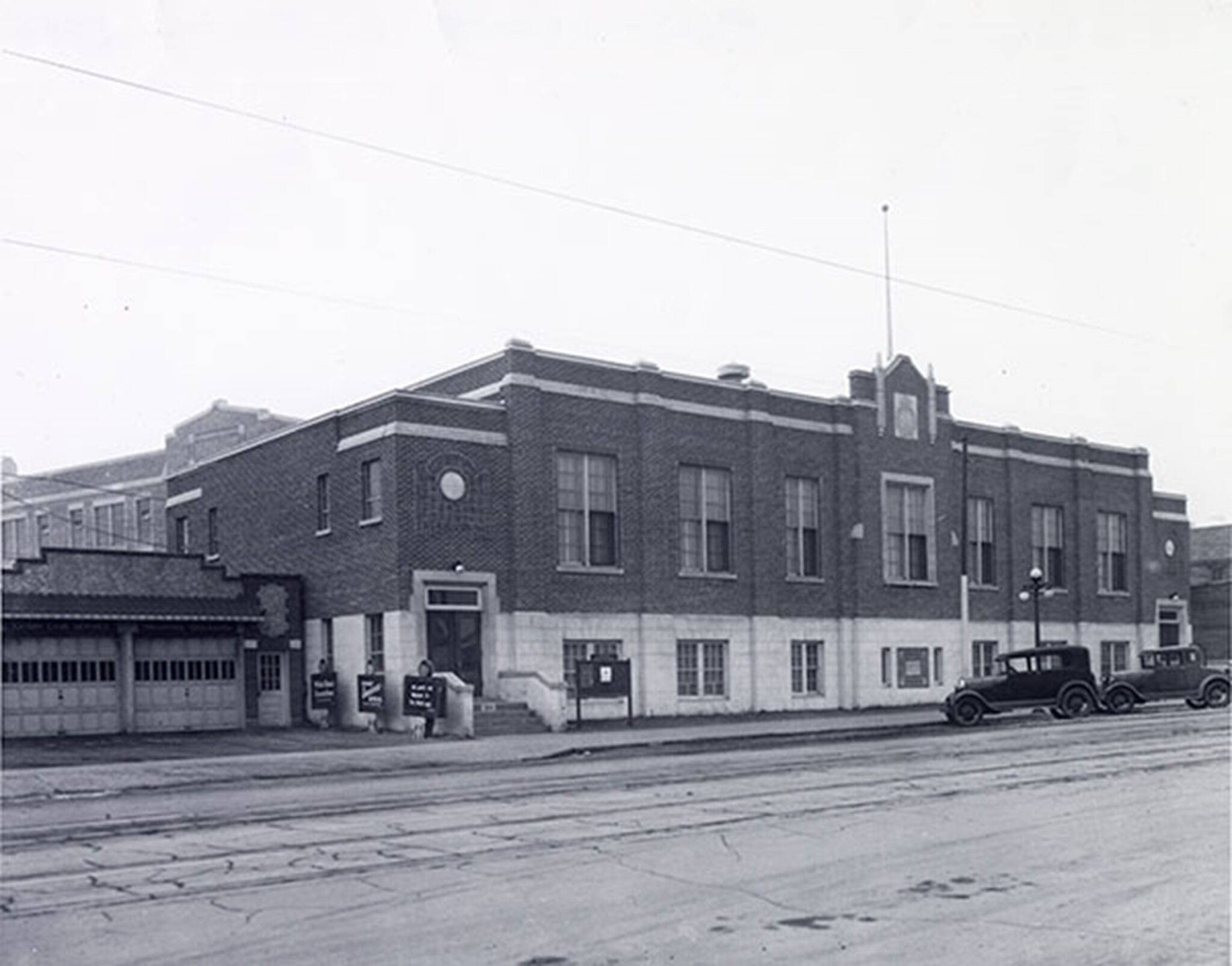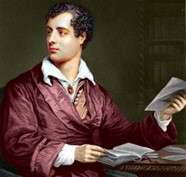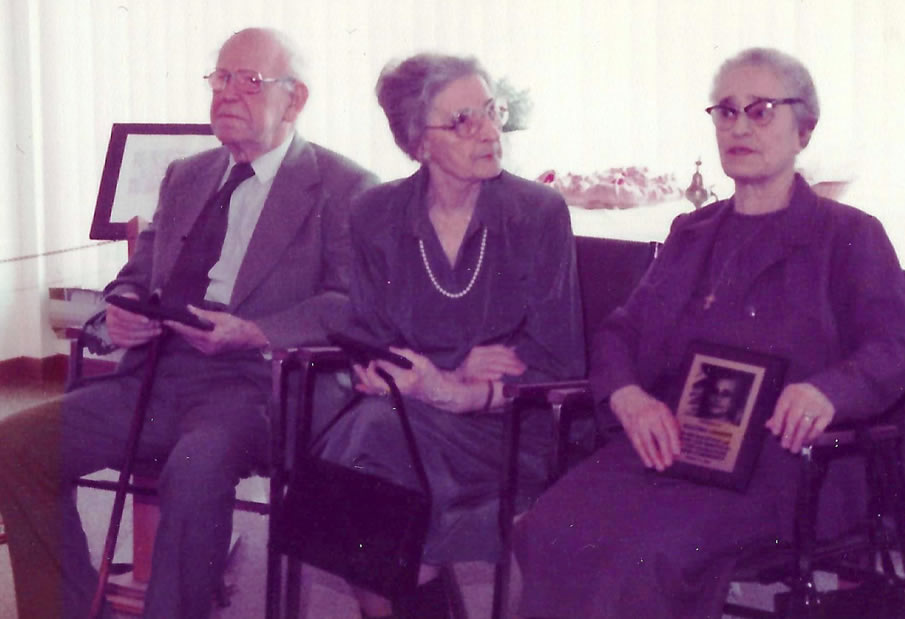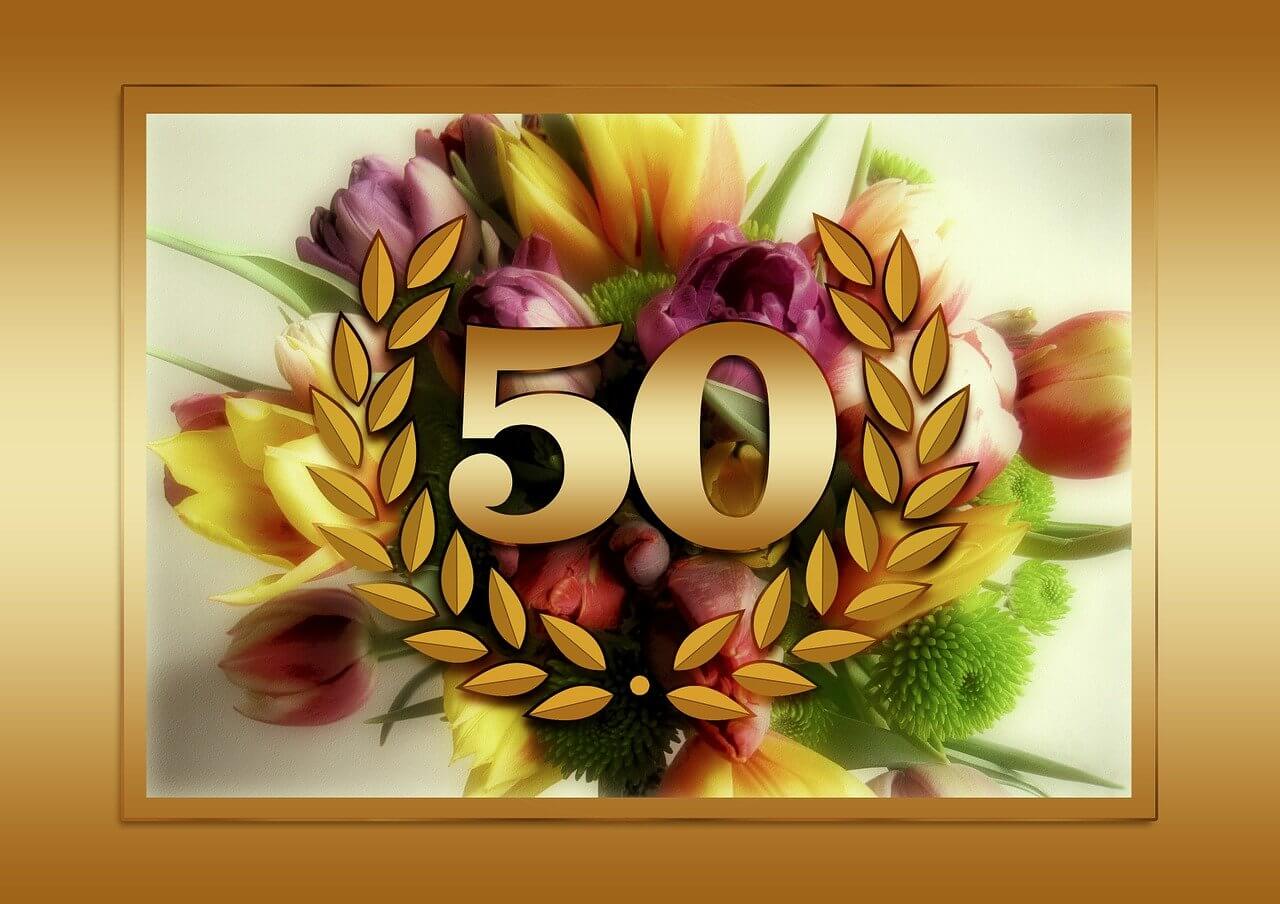
The Hellenic Orthodox Community of Saskatoon celebrated 50 years on September 7, 2013.

During the 19th century, Greece achieved its long-sought-after goal of independence after nearly 500 years of oppressive Ottoman rule. The century ended with great hope for the new nation’s future as major economic advances and social reforms were achieved. Starting in the early 1900’s many Greek people immigrated to other parts of the world including Canada, and some settled in Saskatoon. To preserve their culture and faith they proceeded to establish a Greek home away from Greece. This resulted in the establishment of a vibrant Greek community.
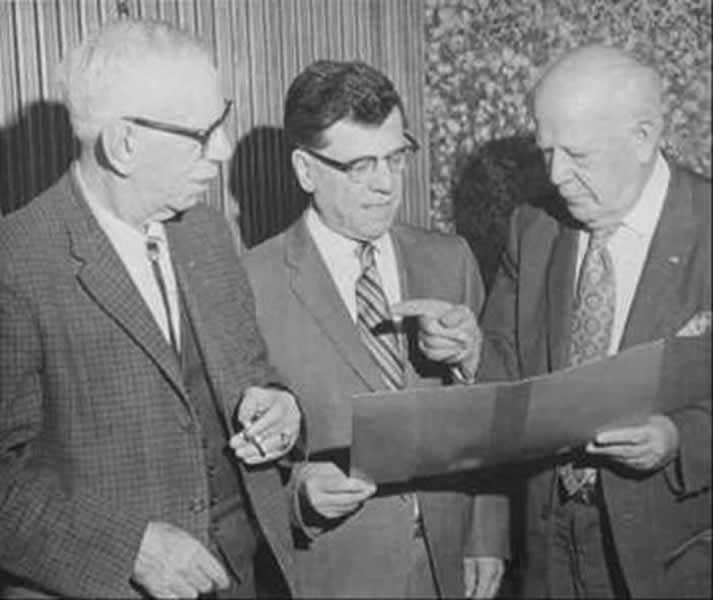
Greek settlement in Saskatchewan dates back at least to the turn of the 20th century. Influential early pioneers of Greek origin who eventually settled in the city of Saskatoon included people like Kostas Valaris in 1901, as well as Gus Thanagen, and Gus Golf respectively in 1909 and 1910. However, the vast majority of the early settlers of Greek origin arrived during the1930s.
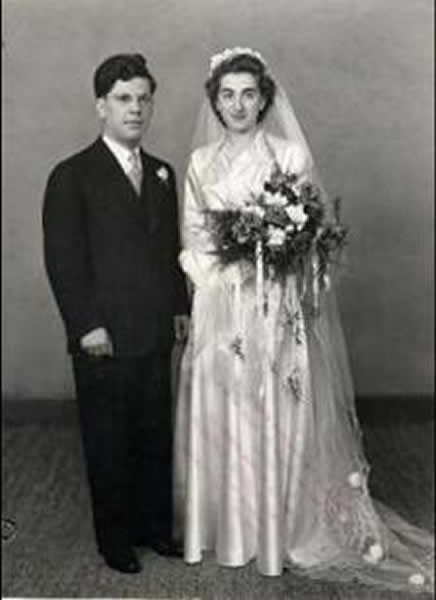
These settlers included the Girgulis, Gardener, Golf, Pontikes, Leakos and Barootes families. Pictured here is the wedding photo of Sam and Cleo Girgulis.
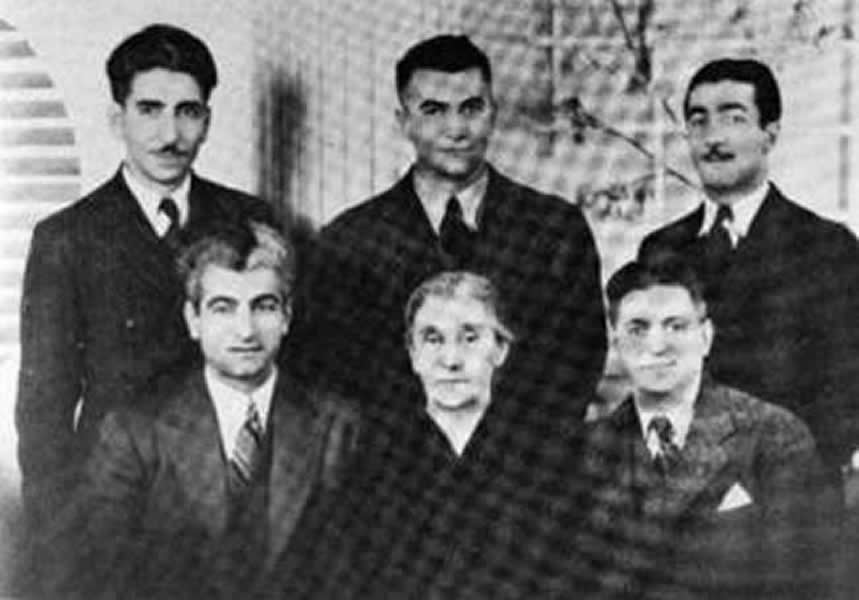
These early Greek families in Saskatoon were particularly responsible for encouraging what became known as the chain migration from the Pelopónnisos in (the southernmost region of mainland Greece), especially from the villages surrounding the city of Tripoli, in the province of Arkadia such as Kastri and Astros, and later places like Nafplion and parts of modern–day Asia Minor. The Greek population in Saskatoon quickly began to increase as the 1940s gave way to the 50’s and 60’s, and the demographics of the Greek immigrants to Saskatoon began to shift with many younger men and women immigrating to Saskatoon from other areas of Greece including Macedonia..
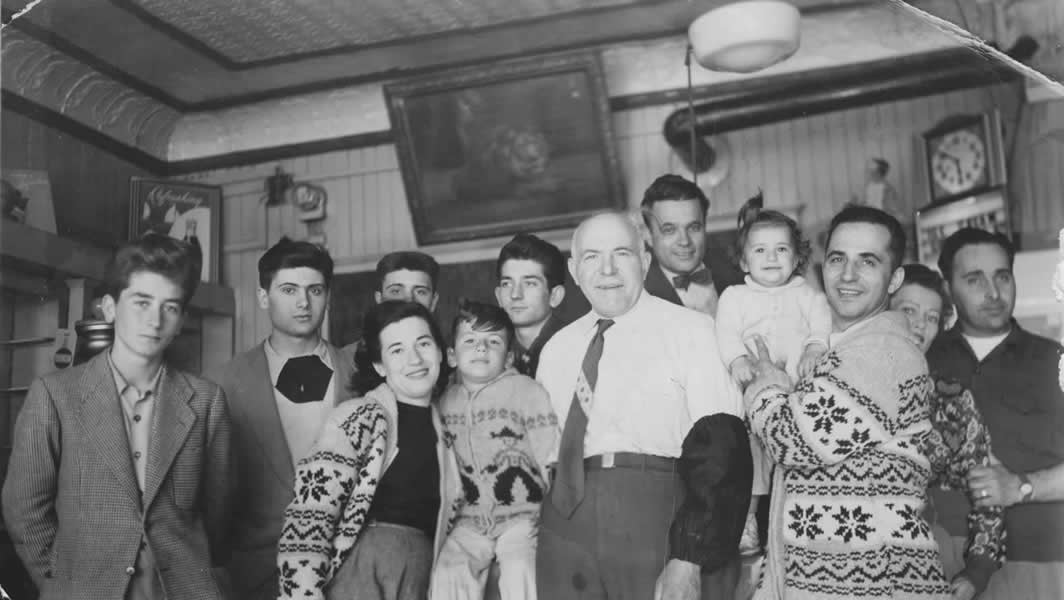
You may see one or two familiar faces in this picture if you look hard such as the strapping young man second from the left, a young fellow by the name of Jim Kosmas.
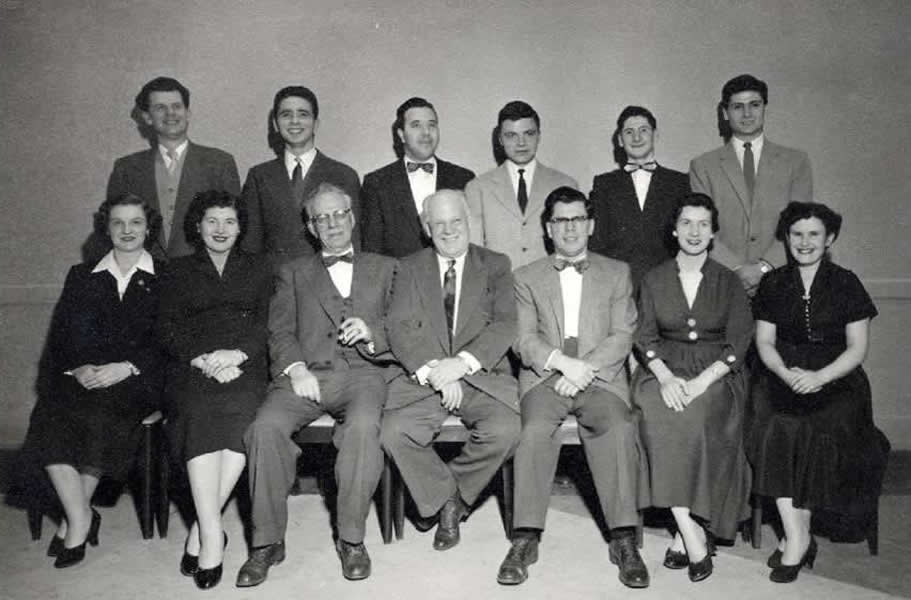
The older generation of Greeks in Saskatoon quickly took to helping these new arrivals with things such as providing them with immigration sponsorship, jobs and employment, short-term financial support, homes and places to stay and other settlement assistance as needed.

Three hunks are heading to Greece to find their future wives. From left to right we have Jim Kosmas, Andy Pappas, and Gus Foufas. The only successful bachelor to find a wife was Andy as he impressed the lovely Maria his future wife with his brand new Pontiac Parisian with the convertable style roof. He brought this car on the ship from Canada to Greece. Jim and Gus found their lovely wives on future trips to Greece.

Over the years our Greek dancers performed at many of our Greek community celebrations like March 25th (Greek Independence Day), October 28 (OXI Day), Canada Day, and festivals like Folkfest. Pictured here is one of our earlier dance groups.

Pictured here is a young Jim Kosmas and Cleo Girgulis. These are two of the most distinguished members of our community.
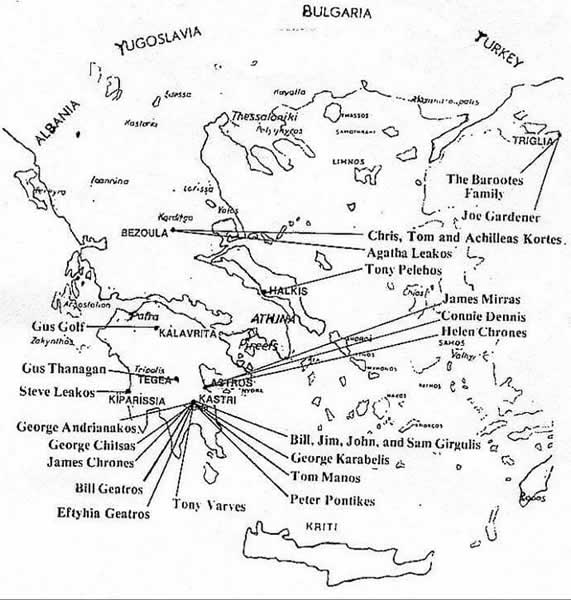
As the rate of Greek immigration to Saskatoon (and across most of Canada) increased substantially after World War II, Saskatoon saw many more immigrants from other parts of Greece come to our city well beyond those who only hailed from the southern – most portions and Peloponesian region of the country.
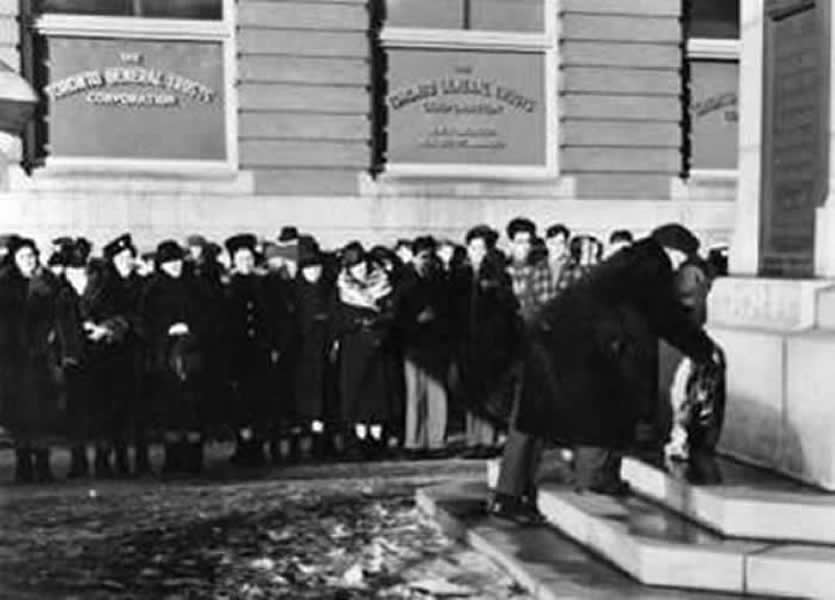
Upon their migration to Canada, most Greek immigrants tended to favour careers in the restaurant business in North America, and Saskatoon was certainly no exception.
For the early Greek pioneers, the restaurant industry brought them into prominence in the local community. Through their businesses, many Greeks attained a reputation for being hospitable, hard-working and ambitious members of society.
Pictured here are members of the Greek community on October 28th (OXI Day) placing a commemorative wreath to remember those we lost in World War 2.

Many local Greeks were even singled out for their tremendous support of the war-effort during the 1930’s and 1940’s. Because restaurants served as social gathering spots in the City, the Greeks were also able to interact with a wide range of people within Saskatoon from all different walks of life and made social connections that further strengthened their ties to their adoptive city.
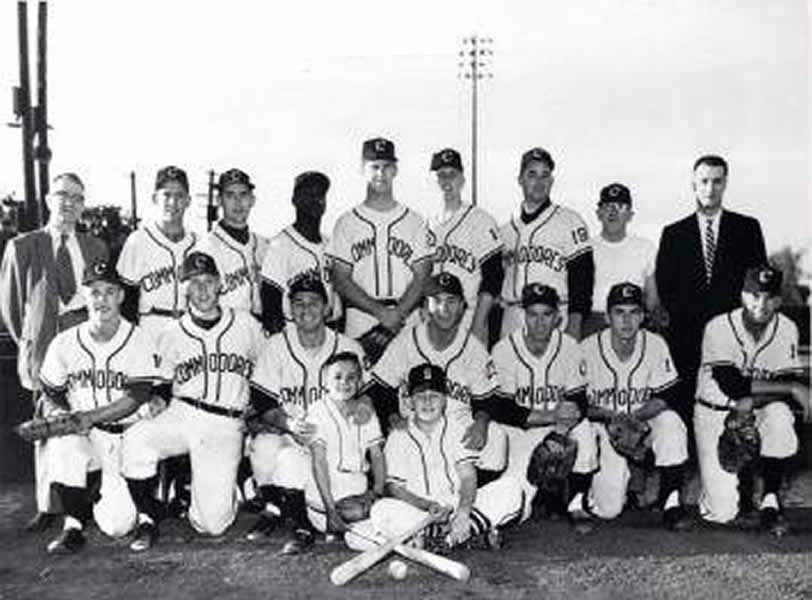
As a result of the tremendous community involvement of these Greeks in Saskatoon, many landmarks in Saskatoon bear the names of some very prominent Greek Pioneers. Examples include Girgulis Park in Saskatoon’s Parkridge Neighborhood, Girgulis Crescent in the city’s north end, and Leakos Baseball Fields in the city’s southwest region. Shown here is the Saskatoon Commodores with the owner Steve Leakos and manager Spero Leakos. Spero would bring players from the United States to play for the Commodores, some of whom would end up playing professionally in the Majors.
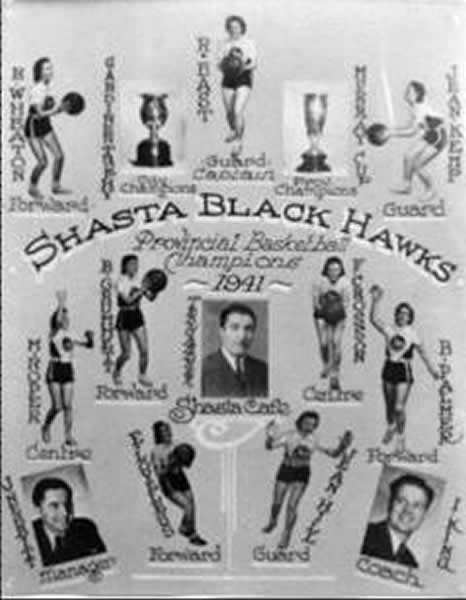
The Shasta Restaurant sponsors a womens basketball team, the Shasta Black Hawks.
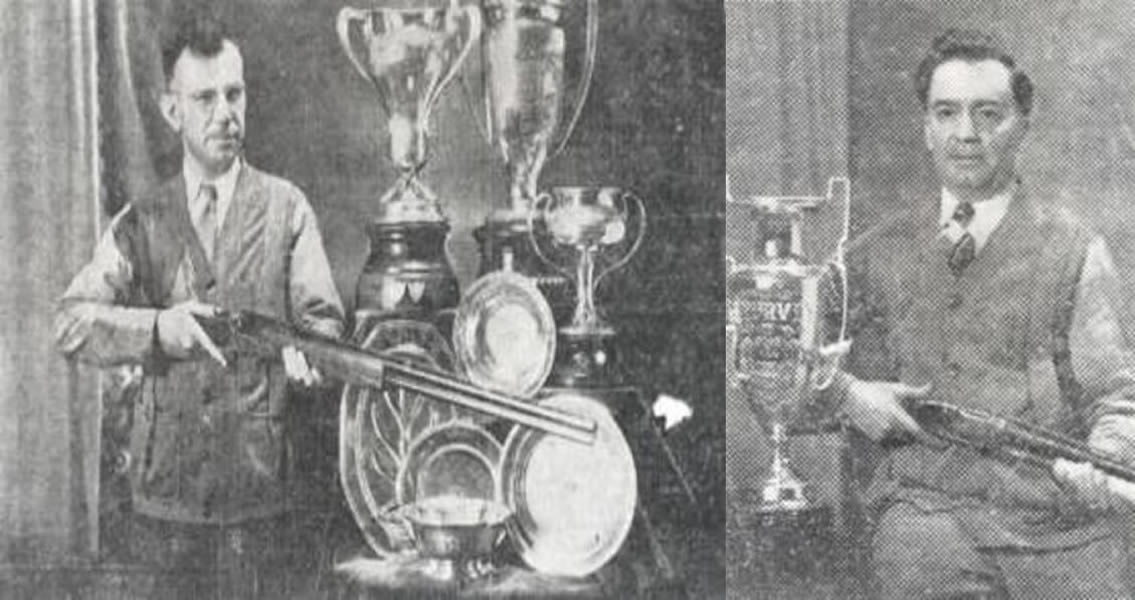
Jim Gigulis and Bill Geatros were expert marksmen and lent their talents to coaching at the national and Olympic levels.

The Greek restaurant scene in Saskatoon became so prominent during the early years of the community, that by the 1970s there were more than forty Greek-owned restaurants in Saskatoon alone. With the size of the Greek community at time numbering in the low 200’s this means that there was a ratio of 1 restaurant for every 5 Greeks in the city.
Check out the Commercial Cafe back in time…

Fast forward to today and you will notice that pictured here is the original building but is no longer the Commercial Cafe.

Although these restaurant businesses were by definition competitive with one another, they were also largely established through the strong Greek tradition of mutual help for one another. Pictured here is the Gem Cafe on Second Avenue owned by the Chrones family.

Again, this was the original location of both the Gem Cafe and the Elite Cafe. (These Cafes were a couple of doors down from each other.)

Eventually, many Greek restaurant owners became investors in many other local business ventures as well, such as real estate development, condominiums and apartment building ownership, and the retail industry among others. They tended to view the restaurant business as a means toward improving the financial and social status of the next generation of Greeks.

The Ritz Hotel was owned by the Pontikes Family back in the day.

The location of the Ritz Hotel on the corner of 21st Street and 1st Avenue is now a building housing a bank.

The Patricia Café with it’s ornate and elaborate decor.

Personal Memories: Ken Peter Pontikes, Saskatoon
In 1959, my dad with his partners (James Kosmas and Peter Bezbes) took a huge gamble and built a restaurant (consisting of a coffee shop, formal dining room, banquet room, and curb service) on land located outside of Saskatoon’s city limits and north of the airport. It was far enough from the city to rely on on-site wells for its supply of water and in sewage lagoons in a remoter corner of the property. (Later, the surrounding property was developed into a “recreation centre” including a Par 3 golf course.) The business, known as the Suburban Restaurant, was in addition to an existing successful operation, the Barry Café, which was in the Riversdale business district.
The Suburban Restaurant on Idylwyld Drive North.

The Elite Cafe back in the day!

The Elite Cafe modern day!

The Elite Cafe today is now an Irish Pup.
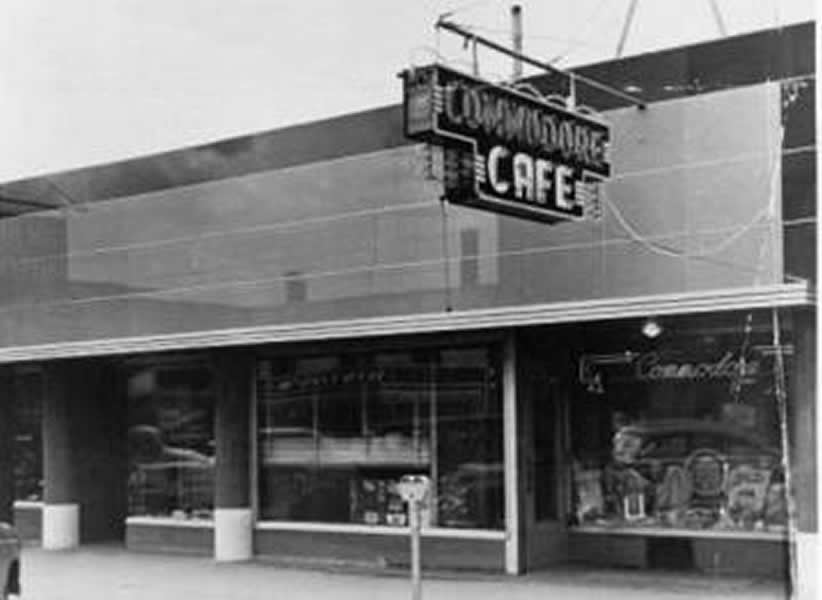
The original Commodore Restauarant located on 21st street owned by the Leakos family.

The Commodore Restaurant today.

GOLF’s Chocolate Shop back in the day.

GOLF’s Chocolate Shop today.
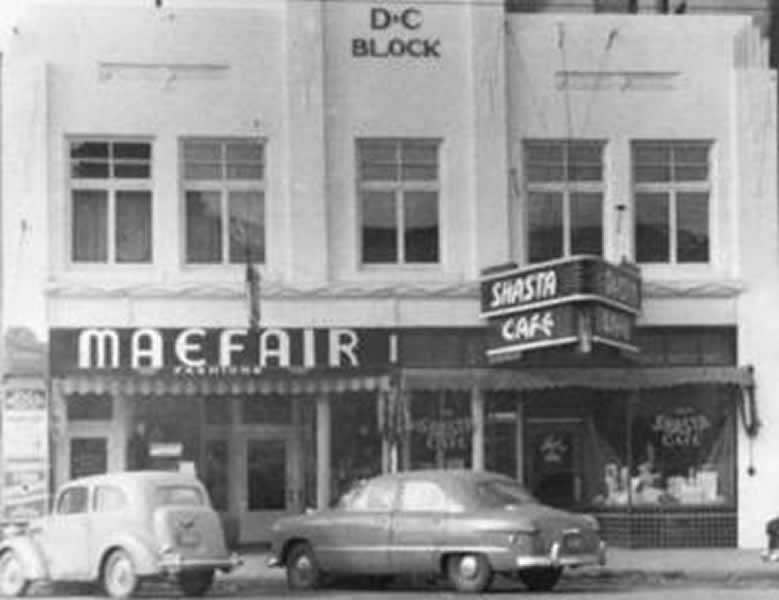
The Shasta Café.

The Shasta Café today.

As more and more Greek immigrants began to arrive in Saskatoon very few had direct links to their families back home, and so the desire among the Greeks for a fraternal organization of sorts to fill this void rose within the immigrant population which thus gave rise to the establishment of the Saskatoon chapter of the AHEPA (The American Hellenic Educational Progressive Association (AHEPA) which was and remains one of the largest non-religious Hellenic heritage groups in the world and an important community service organization in North America.

Visit from our Prime Minister.
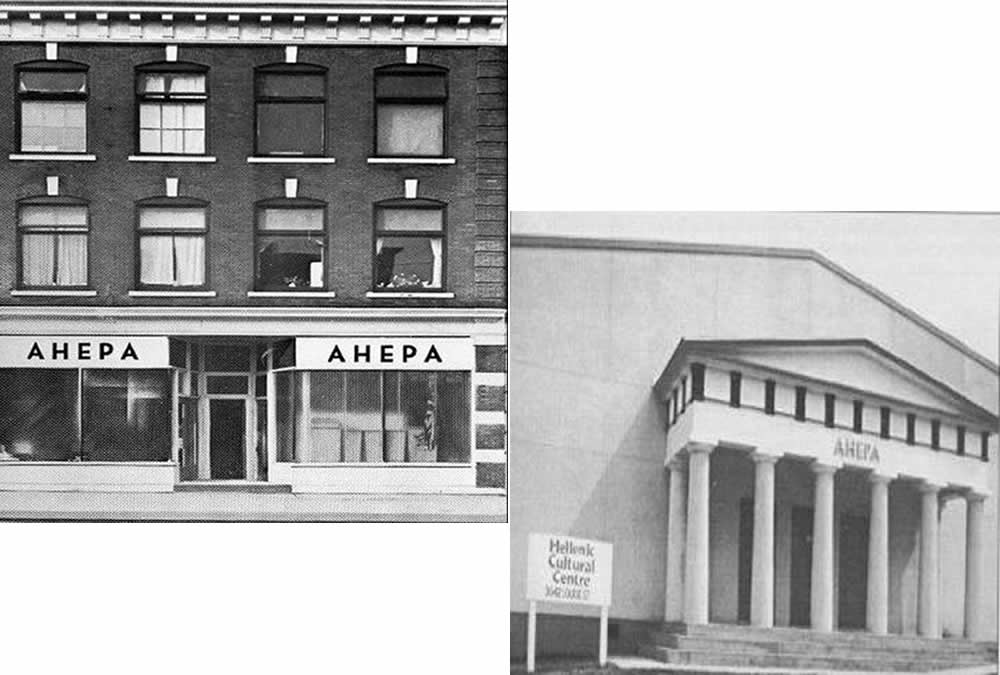
The establishment of an AHEPA chapter in Saskatoon also meant that the local Greek community now had a building of its own in order to tend to the various needs of the local Greek citizens. The first of two AHEPA buildings that existed in Saskatoon which was located in the southern part of downtown and provided among other things transitional residences for newly arrived immigrants, a hall to serve as a gathering place for meet and greets, dances and eventually spiritual and religions celebrations (as there did not exist at the time an exclusively Greek Orthodox church in Saskatoon).

Greeks love to celebrate those special occasions.

While a long and storied tradition of Eastern Orthodox Churches in Saskatchewan existed, no Greek church existed in Saskatoon at the time. Therefore, most religious services in those years were either held in some of the local Ukrainian orthodox churches as we see here, or in the dining rooms of various Greek restaurants, or else in the hall and basement of the AHEPA building.

In order to tend to the spiritual needs of the Greek people in Saskatoon, periodically, Greek clergy from throughout western Canada would come to the city in order to perform sacraments and minister to the faithful. These clergy included Father Vassilios Stamatopoulos from Regina pictured here.

A young priest, Father Sotirios Athanasoulas, would travel periodically to Saskatoon from Edmonton via train, to help us with our celebrations. He now goes by a different title, His Emminence Archbishop Sotirios. If you look closely, you may recognize the child in this photo as being Spyro Kokonas. You can see, in those days, that the Greeks had to improvise plenty, even when it came to baptisms.
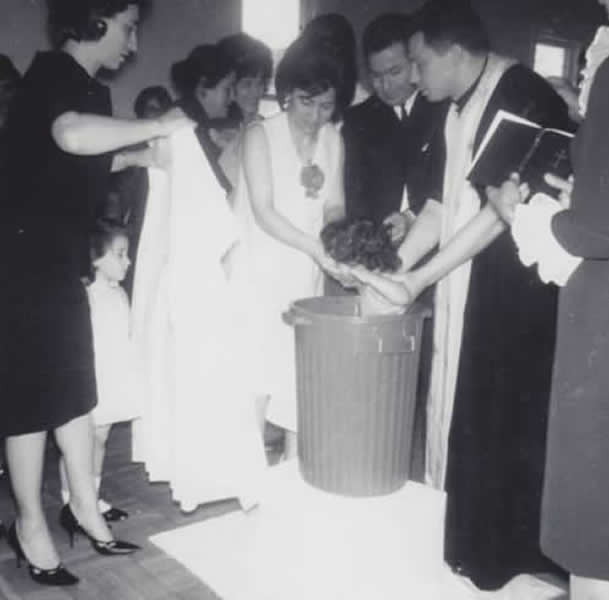
If we did not have a proper baptismal font, we would use a garbage can instead.

The need quickly became apparent by the local Greeks that we needed a formal place of worship. We needed to establish a local parish to serve the religious needs and obligations of the local orthodox parishioners. Therefore, in the early 1960’s there was a movement to formally incorporate the Hellenic Greek Orthodox Community of Saskatoon. This culminated in 1963 with the establishment of the Hellenic Orthodox Community of Saskatoon. Our objectives were:
- To preserve and propagate the Orthodox Christian faith and traditions
- To preserve and perpetuate the Greek language through instruction by a qualified teacher
- To cultivate good citizenship and loyalty to Canada
- To practice charity according to the ideals of the Christian religion and to the extent possible, to lend to supports to such causes as it befits the public
- To preserve and maintain a community centre for the Hellenic orthodox members of Saskatoon for the propagation of the faith.
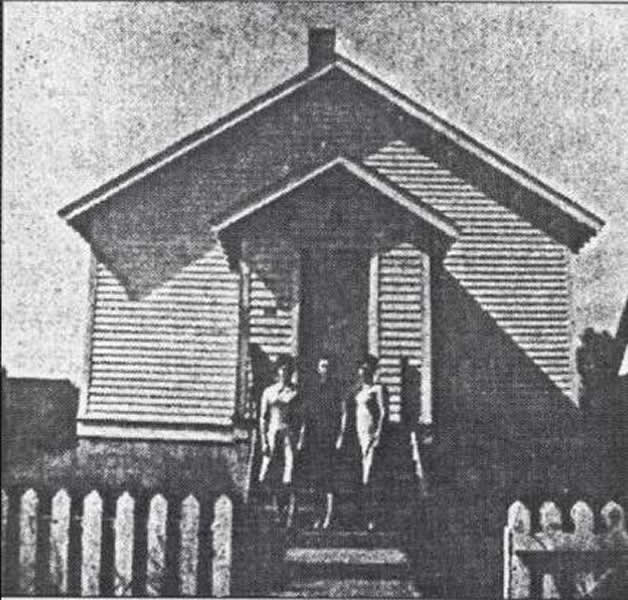
Our first church building.
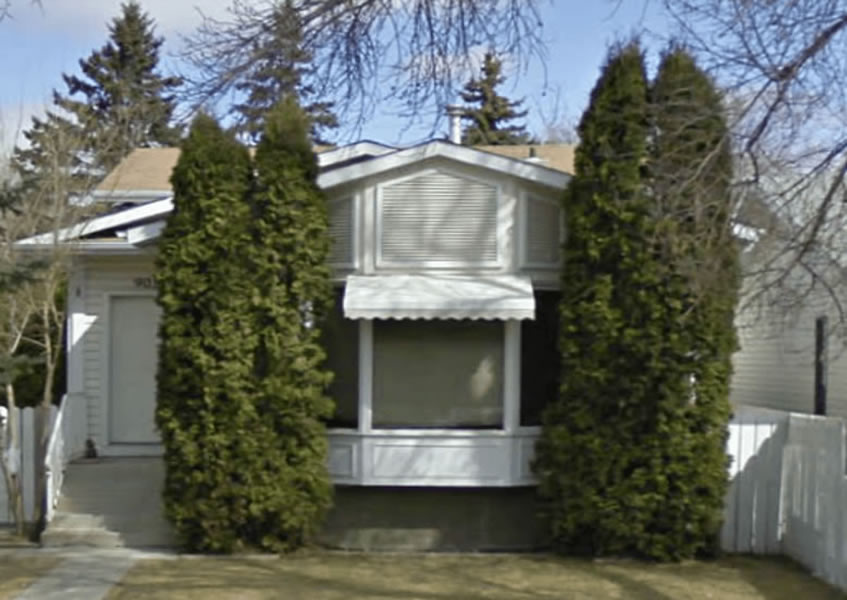
Shortly after the formal establishment of the Greek Orthodox Community of Saskatoon, in the spring of 1963, the community purchased their first official church building for the princely sum of $6,000. It was situated at 905 5th Street East. For several years, this edifice sufficed as the community’s local church and centre of worship, but as the community continued to grow, it became evident that a larger church was needed to service the community.

Shortly after the formal establishment of the Greek Orthodox Community of Saskatoon, in the spring of 1963, the community purchased their first official church building for the princely sum of $6,000. It was situated at 905 5th Street East. For several years, this edifice sufficed as the community’s local church and centre of worship, but as the community continued to grow, it became evident that a larger church was needed to service the community.

With that, the community purchased their present church on 8th street and Dufferin avenue in 1976 and dedicated their church to the Dormition of the Virgin Mary (Koimis tis Theotokou).
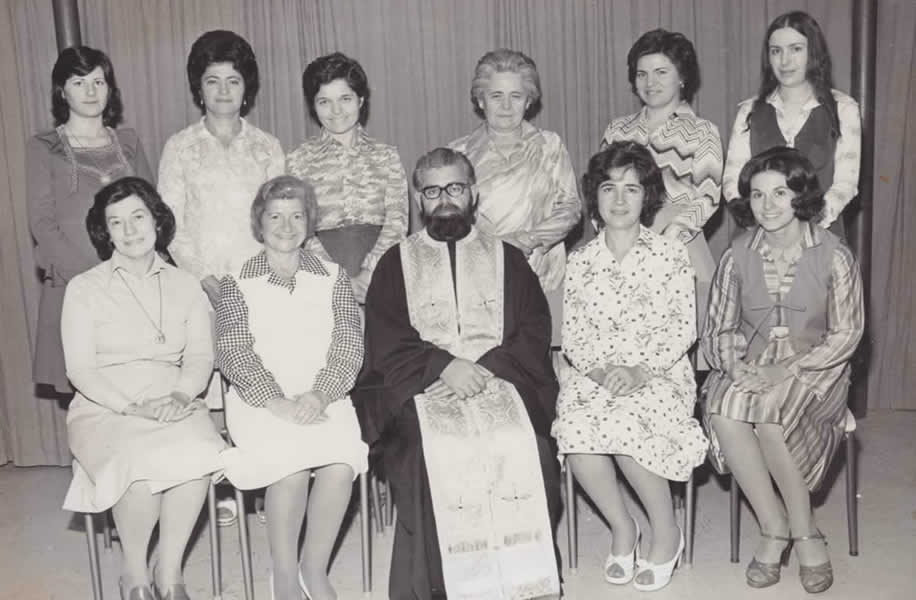
Soon after, the first full time local priest, was transferred into the community. Over the next 4 years, Fr. Kontstantine Kakavelakis dedicated much to the Greek orthodox community. We began to flourish.
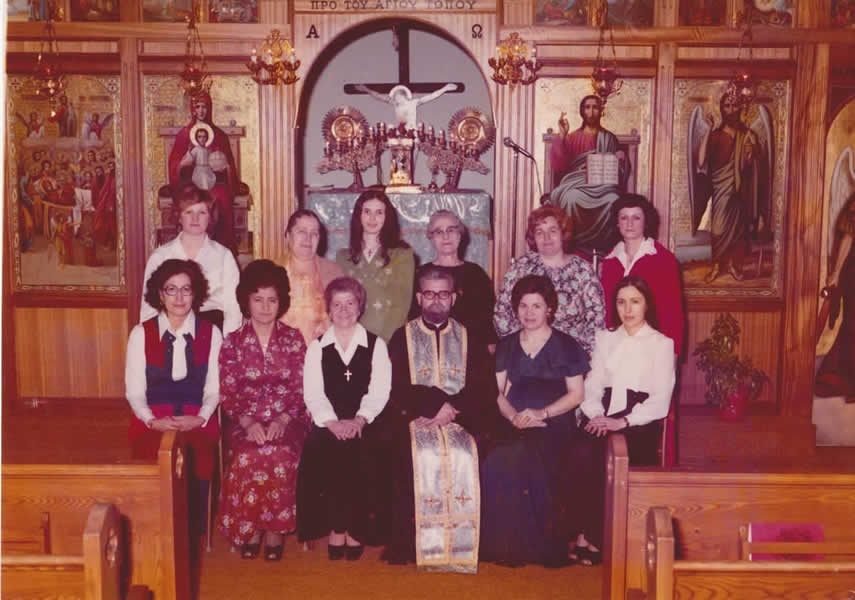
Under his spiritual leadership and guidance, many things were established in the community in response to the various demands from the local parishioners.
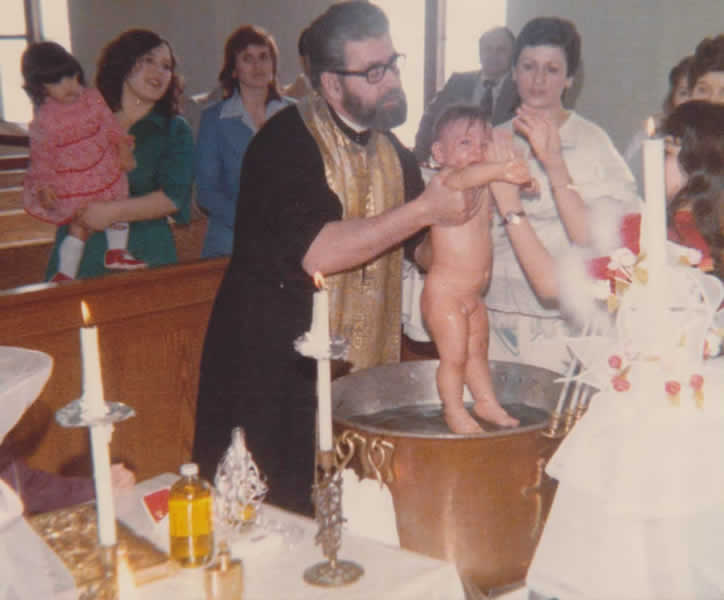
Under his leadership a woman’s and child’s choir were formed, and the local chapter of the Philoptochos or Friends of the Poor Women’s Auxiliiary was established.

A Greek orthodox youth association (or GOYA) chapter was established.

The church was honoured to have many angels grace our presence.

With the arrival of successive generations of Greeks, the educational aspirations of many local Greeks also grew.

The community witnessed many second and third generation Greek Canadians entering university rather than pursue careers in the service industry. At the same time, many efforts were made to preserve the Greek cultural heritage in Canada: a Greek language school was established in Saskatoon by 1970.

This served to familiarize the younger generation with Greek history, literature and drama. Eventually this extended to teaching the Greek language to non-Greek spouses in mixed marriages, and cemented bonds between local Greek children.

From late 1970’s through the 1980’s the local Greek community experienced a baby boom. The rise in the child population created a demand and a need for the youth of the Greek community to take part in local events such as local celebrations of ethnic cultures.

The community celebrated Greek civic holidays, religious and spiritual events.

They displayed their culture by performing at community gatherings such as Canada Day, and Folkfest.

The community takes great pride in their preparations for these events.

In 1980, shortly after the departure of Fr. Kakavelakis (he moved to another parish in Eastern Canada), Fr. John Nikolaou, a former resident of Saskatoon during the 1950’s and 60’s, was commissioned to come to Saskatoon to serve as the parish priest.

Father John faithfully served the Hellenic Orthodox Community of Saskatoon for nearly 30 years until his retirement in the spring of 2008.

During the 28 years that he served as parish priest, the population of the Greek community of Saskatoon would often fluctuate. Many 2nd and 3rd generation Greek families immigrated into and out of the city of Saskatoon. Those that moved away did remain in Canada.

The local community, and in particular the church, remained vibrant and incredibly involved in the greater Saskatoon Community.

The Greek community of Saskatoon was one of the founding ethnic community associations in the city of Saskatoon to be involved in the inaugural Folkfest of 1980.

The community has been a mainstay in the event for over 30 years. Additionally, the Greek community of Saskatoon was a constant fixture at the Saskatoon Prairieland Exhibition with its trademark souvlaki stand.

The church also continued to hold celebrations for the various Greek national and civic holidays.

Showing off our traditional Greek clothing.

Dancing at Folkfest in the old Army & Navy building.
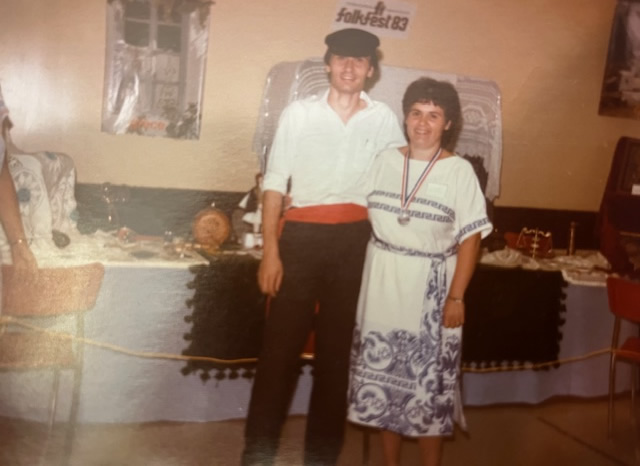
Tony Antonopoulos and his older sister Shirley Liakopoulos looking their best at Folkfest 1983.

Dancing at Folkfest at the Prairieland Exhibition building..
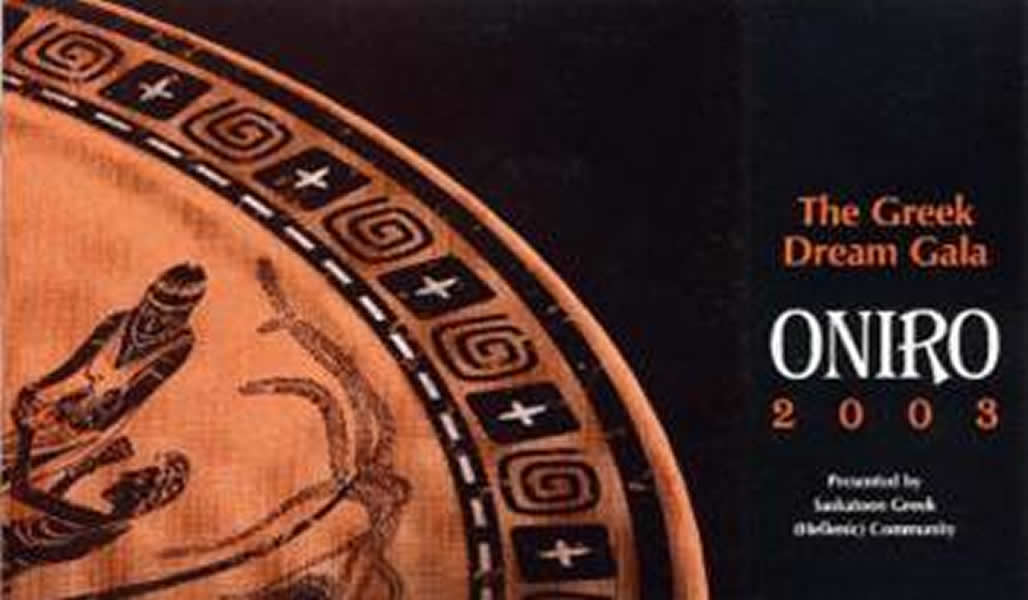
It would be inevitable that the Greek community would take an active role in conducting joint fundraisers with other local charitable organizations. They gave back to the city by supporting many worthy causes in the larger Saskatoon community. The Greeks raised awareness and funds for those less fortunate through events like “An Evening in Greece”, Oniro.

Jim’s Ouzoplaooza (named in honour a member of our community who tragically passed away in 2009), raised much money. Over the years the Greek community has donated vast amounts of time and money to causes such as The Crisis Nursery, Tamara’s House Women’s Shelter, and the child hunger and education program called CHEP.
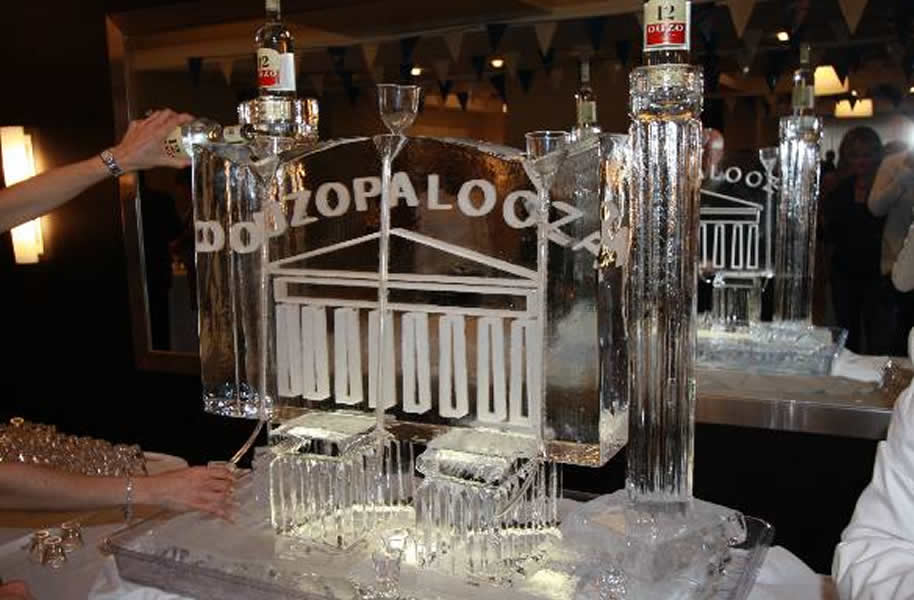
Over the past many years, the Greek community of Saskatoon worked directly with the City Hospital Foundation, and the Pediatric Ophthalmology Department at Saskatoon City Hospital to purchase a neo-natal retinal camera, which aids in the prevention and treatment of blindness in premature infants.

The Greek community of Saskatoon would raise $100,000 dollars for this cause. All told, the many events that the Greek community jointly with other charitable organizations, raised hundreds of thousands of dollars in support of worthwhile causes.

After the retirement of Father John, he was replaced by Rev. Fr. Michael Michael. Fr. Michael was ordained a priest here in Saskatoon in May of 2008. He was then commissioned here as the parish priest of the Hellenic Orthodox Community of Saskatoon. Fr. Michael served until August 2012 when he was called upon by the Metropolis of Toronto to the serve as the chaplain at the St. Cyril and Methodios Chapel, a Hellenic Home for the Aged.

Father Michael was then replaced by Rev. Fr. George Tolias, who presently serves as the priest of the Hellenic (Greek) Orthodox Community of Saskatoon. Father George has been with Koimisis tis Theotokou for just over a year now and the Greek community of Saskatoon has embraced him with open arms.

Fr. George is a dynamic yet soft-spoken priest, with a seemingly limitless supply of energy and enthusiasm and an unwavering devotion to his faith. He demonstrates a tremendous amount of love and concern for his parishioners and his fellow man in general. In his very short time with us, Fr. George has endeared himself greatly to the members of our community. Most recently, Fr. George was awarded by his Eminence with the honour of being named the office Economos, a great honour bestowed upon most orthodox priests upon 10 years of service in the priesthood.

He has developed a very special bond with the youth of our community, and many of our more elderly parishioners. His motto is “Father George is always there 24//7- 365”. Judging by the time stamps on the emails that he sends to people, it would appear that he is living up to his motto of “24/7- 365 Fr. George seldom if ever, sleeps”. We just hope that he at least finds the time to rest every now and again, and we also hope that his Eminence will grant our community the favour and the honour of keeping Fr. George here for a long time to come.






